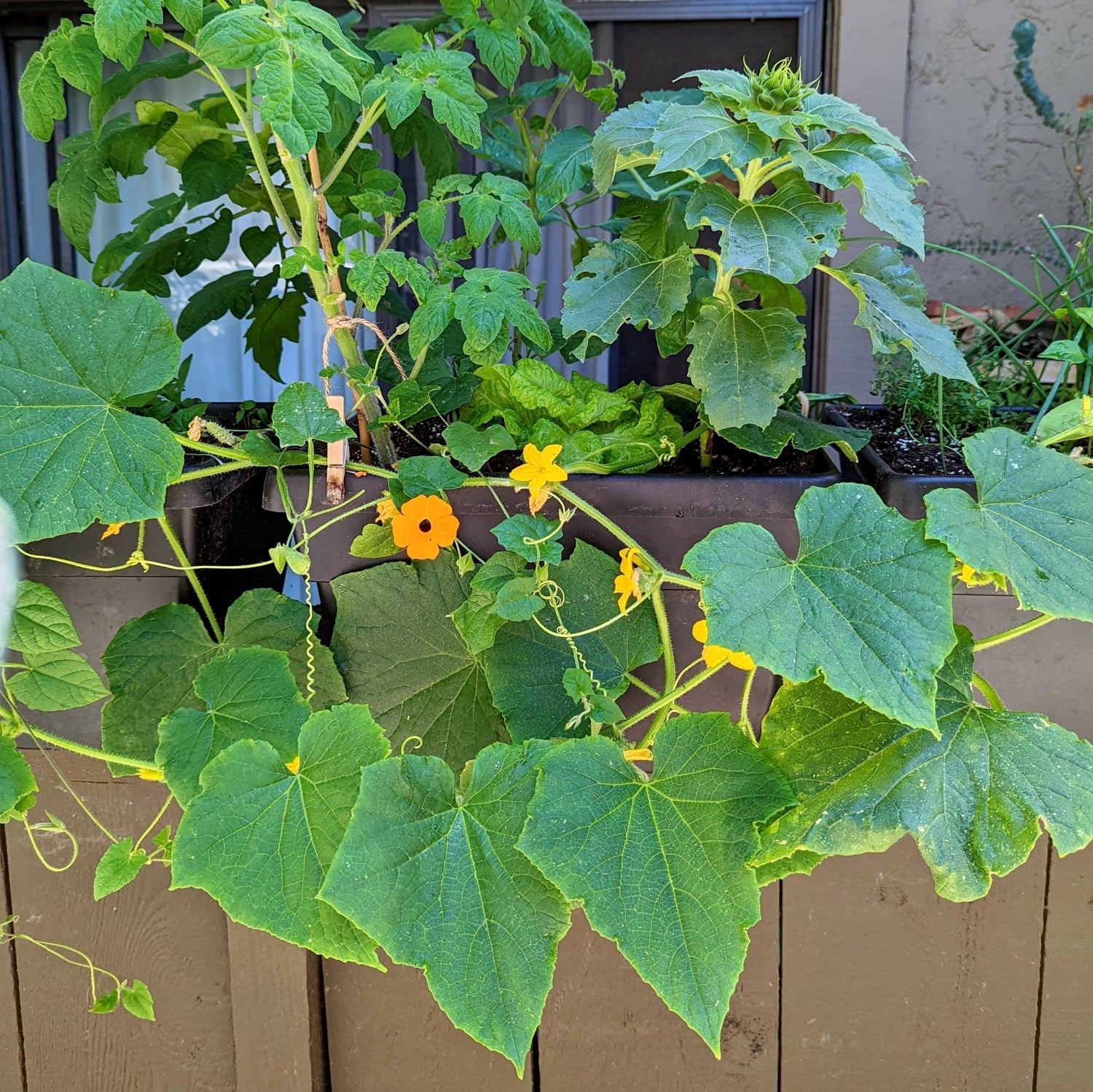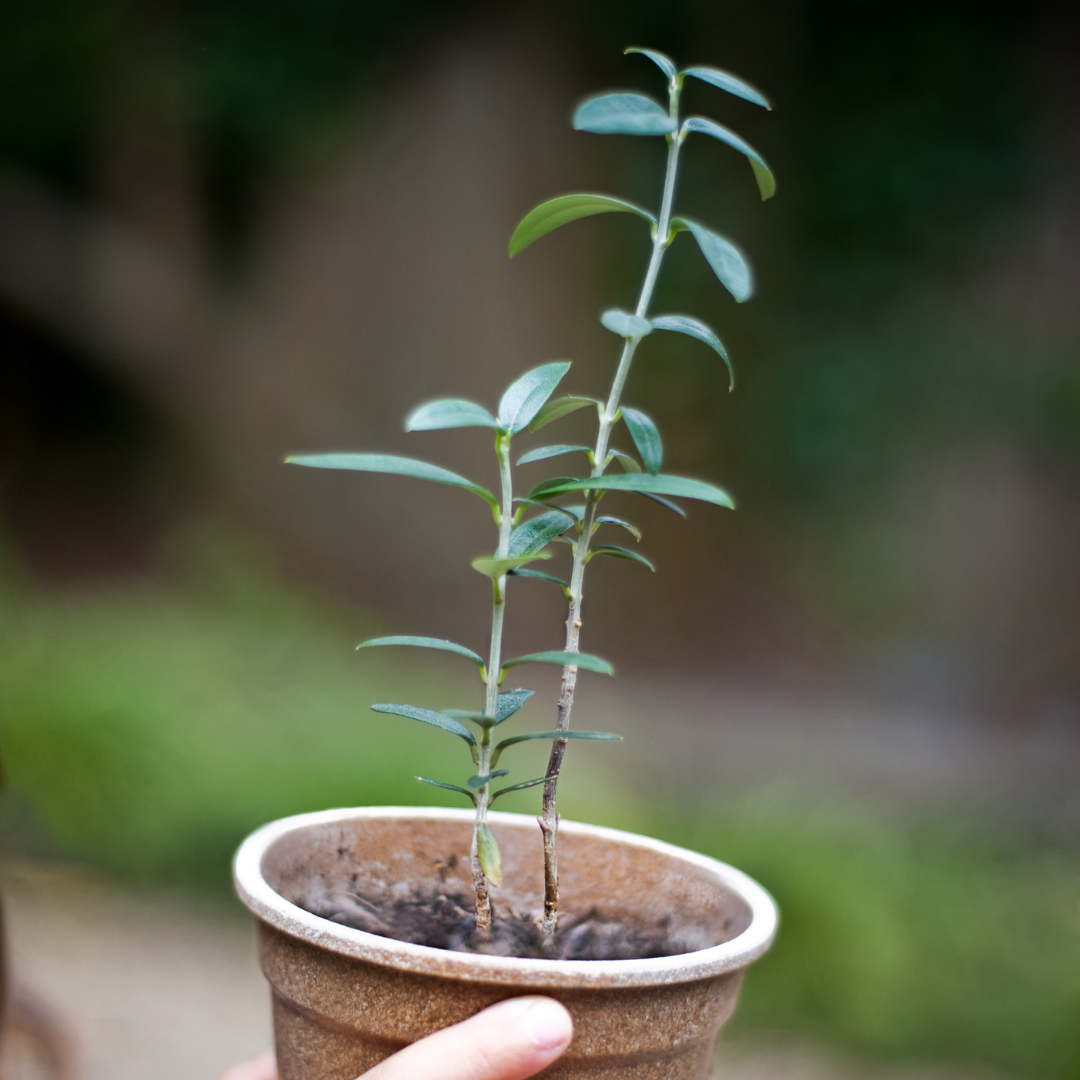So you planted some houseplant seeds, took pains to make sure the setup was perfect and waited, waited and waited and finally a few days, weeks or even months, later, you have sprouts! It's the best feeling!
Unfortunately now you've waited for weeks, or even months, and the seedling just isn't progressing. It's incredibly frustrating when seedlings stagnate, but it isn't entirely uncommon in indoor gardens, unfortunately!
So, what can you do if one of your seedlings hasn't shown any signs of growth in weeks? There are a lot of different possible causes.
Some plants, like most Palms or Cycads, just grow very slowly, so you might just need to wait for those! However it couldn't hurt to check your setup isn't getting in the way of faster growth, so we've broken down the most common potential causes of stagnated seedling growth, as well as how to fix said issues:
Moisture and Humidity

Seeds, as we know from posts like these, need high moisture and humidity to germinate. Seedlings don't need as much, but it's critical to not let your seedlings ever dry out while they're going through their initial growth stages.
Are you someone who tends to over-water or under-water your plants? It can help to set notifications for yourself to check on your seedlings to make sure the soil is still moist. The soil must stay moist but never soggy, as overwatering can flood and destroy the seedling's delicate root systems, and under-watering will deprive the seedlings of a very essential component for their growth.
In my experience, depending on the planter, seedlings usually need to be watered once or twice a week. When you do water them, make sure you're gentle and don't flood the container. Misting can help keep the seedlings and soil moist as well!
Light
Creating a setup with good lighting indoors can be tricky. Similar with water,

both too much and too little light are bad for seedlings. Make sure to keep seedlings away from direct sun, as it can burn their delicate leaves, but they do need either bright, indirect sunlight, or some grow lights.
The seedlings will give you feedback on whether they need more or less light. If the seedling are growing very pale and leggy, then it's time to increase their light, either by moving them to a brighter windowsill, placing them closer to their grow lights, or adding some grow lights.
Windowsills with bright indirect light work well, however to get the most consistent results, I recommend grow lights (like the ones on my grow light shelves behind our cat Maia in the photo on the right!)
I often get asked recommendations on what to look for in grow lights, I have no specific brand recommendations, but just look for a highly-rated full spectrum light. I find that since houseplant seedlings don't need as much light as flowers or vegetables, most highly-rated grow lights on places like Amazon work really well, regardless of wattage or cost. I've tried a variety of grow lights(usually in the range of $10-$30) and they all have worked very well, so you can definitely find a grow light that fits your budget for your houseplant seedlings!
Planter Size
As with the light and moisture, seedlings need planters that are neither too small or too large. Small nursery planters or mini greehouses are ideal for starting seeds and growing out seedlings. It helps gives the roots space to grow out, create a good balance of nutrients in the soil, and keep moisture levels as they should be.
So if your planter is too small, or too large, consider gently repotting your seedling(s) to a more appropriately-sized planter.
Soil, Fertilizer, and Nutrients

Planting medium plays a huge role. There are so many different things going on here, which is why picking a good soil medium for sowing your seeds is so essential. If you're using a soil mix high in fertilizer, that can cause an issue. Too many nutrients in seedling soil can essentially suffocate the roots so they can't breath properly and take in the water they need. If you planted your seeds in a very rich and fertilized medium, you may need to re-pot to a lighter mix.
On the other hand, with too little nutrients, you seedlings won't have what they need to grow properly. We recommend starting your seeds with coconut fiber soil pods, which provide the perfect, sterile medium for germinating seeds. However, after 2-3 weeks of growth, it's best to re-pot the seedling to a more rich medium since the coconut fiber doesn't provide any nutrients for the seedlings as they grow.
We mentioned this in our seedling care post, but it's important to wait to start fertilizing your seedlings for the reasons listed above. We've had fellow hobbyists have issues with their seedlings, likely due to over-fertilizing while the seedlings were still too small.
Temperature
As with seeds, seedlings must be kept warm. If you used a heat mat to germinate your seeds, keeping your seedlings or or close to a heat mat can help if you have a cold home, as they should stay consistently >70F.
Cold, rich soil can cause a certain fungal growth, which is known for causing seedlings to dampen off, killing the seedlings. If you have seedlings that are looking sickly, falling over and dying, then this is very likely what's going on! In that case, you'll need to re-plant seeds in a different, less rich and more sterile medium and keep things warm.
An example

I actually recently had some stagnated seedlings and think the troubleshooting process I did could be helpful for fellow hobbyists.
I planted several different seeds in October- as I mentioned above, I swear by Coco coir soil pods for planting houseplant seeds, but they lack nutrients for seedlings as they grow.
Some houseplant seed varieties grow more quickly, so I had no issues with the Eucalyptus, Coleus, Geranium, Arugula, or Asparagus Fern seeds I planted. They grew quickly, took over their nursery planters within a month or so, and I quickly was able to re-pot them to larger planters with fresh potting mix.
However, my Philodendron(pictured left), Baby Toes, China Doll and Ficus Altissima weren't doing so well. I had them in their nursery planters for several weeks with no sign of growth, and I went through these checkpoints to assess what could be going on:
✅ Their lighting was great, my seedlings always thrive on my grow light shelves, and other seedlings were growing quickly.
✅ Moisture and humidity levels were great, I check on the soil once or twice a week just to make sure, it helped to see other plants were looking great.
✅ Temperature was good, I had them close to a heat mat and away from any windows or vents.
✅ 2" planters are a perfect planter size for starting off seeds.
✅ I was even starting to add some diluted fertilizer as I watered them, however it doesn't quite replace what a good soil mix can offer, so after continued 0 growth, I decided that I should try re-potting the seedlings.

After re-potting the seedlings to a tropical indoor potting mix, their growth took off almost right away! Pictured on the right are the same Philodendron seedlings pictured above, after re-potting and a couple of weeks of growth. Quite the difference! I also want to point out, I didn't water with any fertilizer until they got 2 adult leaves grown in.
I hope this specific example helped showcase a good process to follow when assessing how to address your stagnated seedlings. I've had almost every situation happen in the past(needing to adjust lighting, watering, planter size, soil), so each case of stagnated seedlings will be different!
Summary
Overall, if you're seeing stagnated growth, make sure the planter you're using is a good nursery planter, you're keeping the soil moist(not soggy), brightly lit, and warm. Sometimes re-potting to a new medium or planter can help, and if the seedling has a few leaves, perhaps its time to start fertilizing.
Hopefully this helps! Comment below if you have had issues with stagnant seedlings and if you were able to resolve the issue.
Looking to get more indoor gardening tips? We've got you covered!
- Seedling Care Basics: What to do when your houseplant seeds finally germinate!
- How to Grow Houseplants from Seed
- Common Mistakes Made Growing Houseplants from Seed and How to Fix Them





